As both teams need a victory in an attempt to avoid an early exit, we can expect to see an open game as Scotland take on Argentina in their final Group D game.
With England and Japan having already qualified, one of Scotland or Argentina may be able to make it through to the round of 16 as one of the best third-placed teams. Argentina have a head-start in that regard since they already have one point on the board from their 0-0 draw against Japan in their first game.
Scotland, on the other hand, are yet to pick up any points after two consecutive 2-1 defeats to England and Japan respectively.
This tactical analysis preview will address some of the tactical aspects to look out for in Wednesday’s game at Parc des Princes.
Formations
Manager Shelley Kerr set her team out in a 4-2-3-1 shape against England before preferring a flat 4-4-2 set-up in Scotland’s second game against Japan. With the difference between the two systems being so fine, we won’t really know until we see whether whoever partners Erin Cuthbert up front does so alongside her or from a deeper position between the lines.
In their pre-tournament friendlies, Argentina had also lined up in a 4-2-3-1 shape with Estefanía Banini taking centre stage as the side’s ‘number 10’. However, so far in the competition Banini has been used on the left-hand side of a more conservative 4-5-1 set-up.
In their opening two games, Argentina manager Carlos Borrello chose to include Boca Juniors’ Lorena Benítez in a midfield five as they come up against stronger opposition in Japan and England.
Wednesday’s opponent’s Scotland are a different proposition though. Not only are the two sides more evenly matched, but it is a must-win game for Argentina, who will have to take risks in search of the three points. It will be interesting to see whether this prompts Borrello into fielding a more attacking line-up, sacrificing one of the midfield three for another winger, thus allowing Banini to return to her natural position in the hole.
Scotland’s build-up
We have seen from Scotland’s previous games that they like to play out from the back. They are able to do this successfully because they have a very capable playmaker in Caroline Weir. The Manchester City midfielder is comfortable in taking possession of the ball under pressure, which is why she can often be seen dropping in between the two centre-backs, exchanging short passes with them to help her side progress up the pitch.
As can be seen in the image below from the game against Japan, the three of them outnumbered the two strikers who formed the first line of Japan’s press, which in turn meant they could progress with the ball up to the half-way line. From here Weir could play dangerous balls out to the flanks to create 1v1 situations.
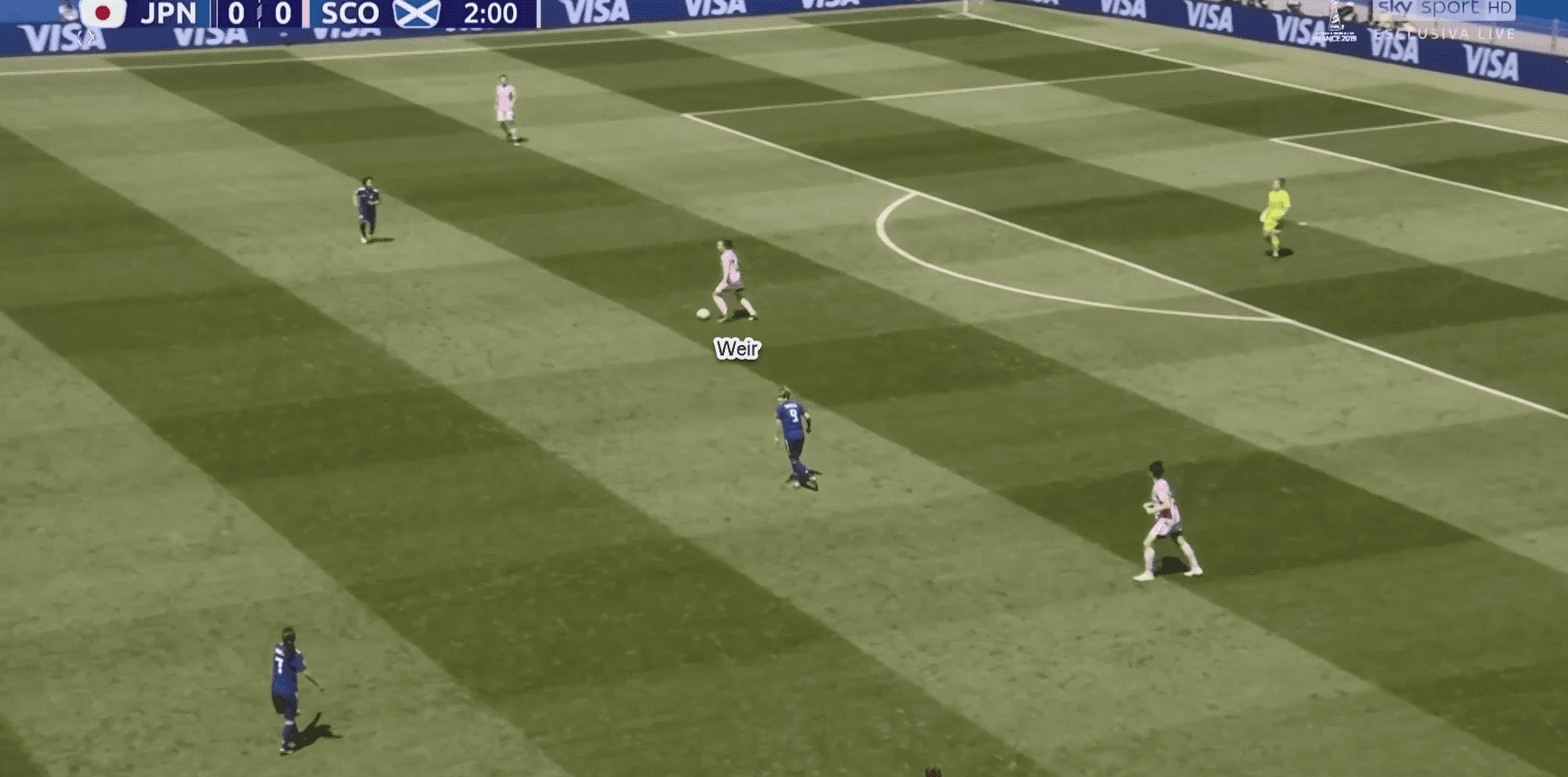
There will be a lot of responsibility on the shoulders of the likes of striker Sole Jaimes and midfielder Banini (should she play in the centre) to effectively press Scotland’s back-line and prevent passing lanes into midfielders like Weir who drop back.
This is because Argentina do not usually press high up the pitch in numbers, but instead maintain their shape, which often means retreating towards their own goal and allowing the opposition to bring the ball forward as in the image below from their game against England.
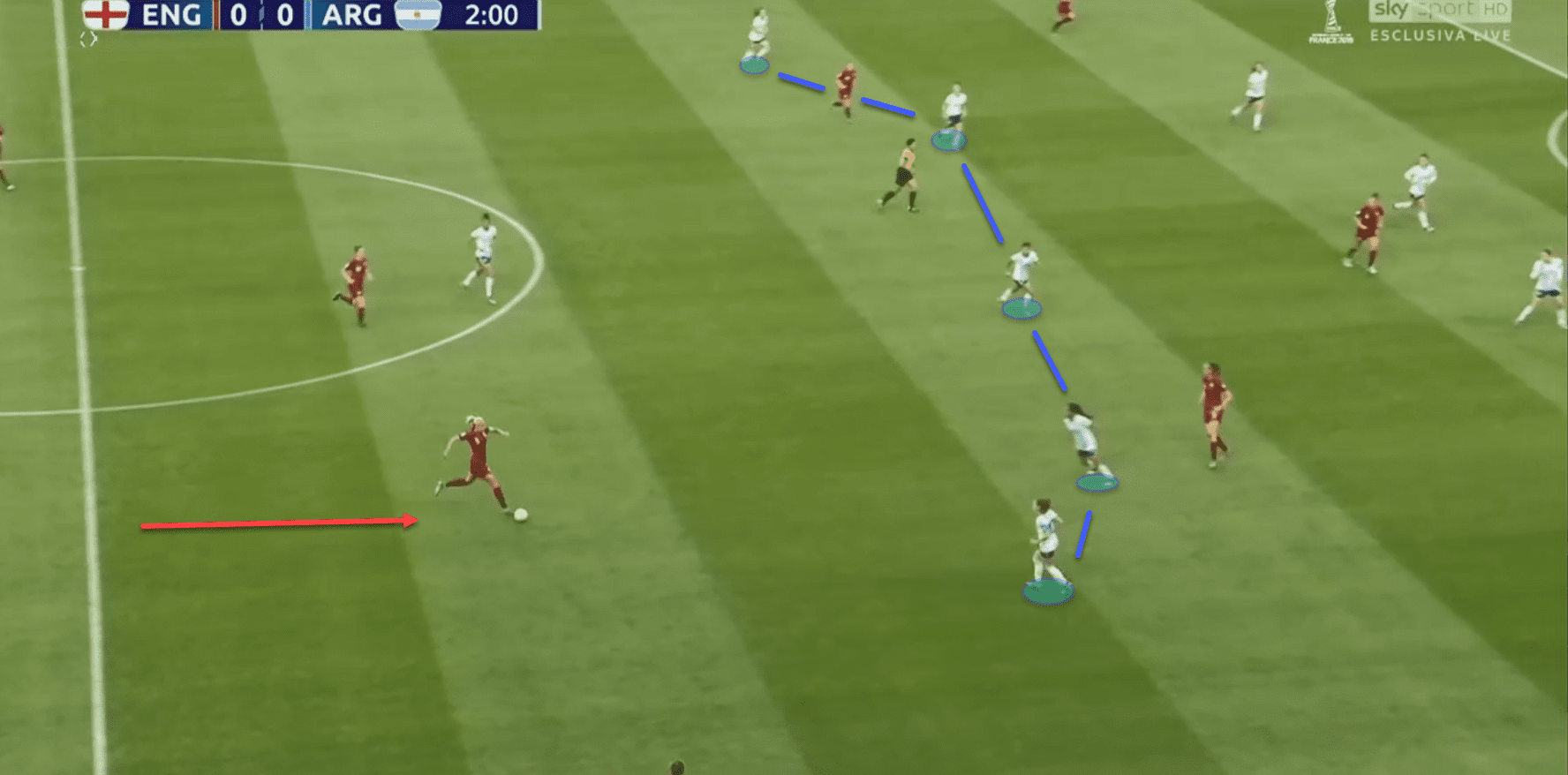
This means that if Argentina’s first line of pressing isn’t effective then they could risk Scotland settling into a rhythm of possession and setting the tempo for the game.
How will Argentina play with the ball?
Argentina only enjoyed 28 per cent possession in their opening game against Japan and had an even tougher battle against England where they only had the ball 24 per cent of the time. So it’s fair to say that we haven’t seen much of Argentina on the ball in the competition so far as they’ve mainly been reduced to searching for Sole Jaimes to hold the ball up and relieve pressure.
We can expect this game to be more competitive though with both sides being fairly evenly matched. This should mean Argentina expressing themselves on the ball more, and if Banini is moved back to her central role, we could see her shine in the Argentina attack.
Banini could be key partly because Scotland will line up with just two central midfield players, leaving space in between the defence and the midfield. We already saw how Japan’s Iwabuchi caused Scotland problems by operating between the lines in the opening game pictured below.
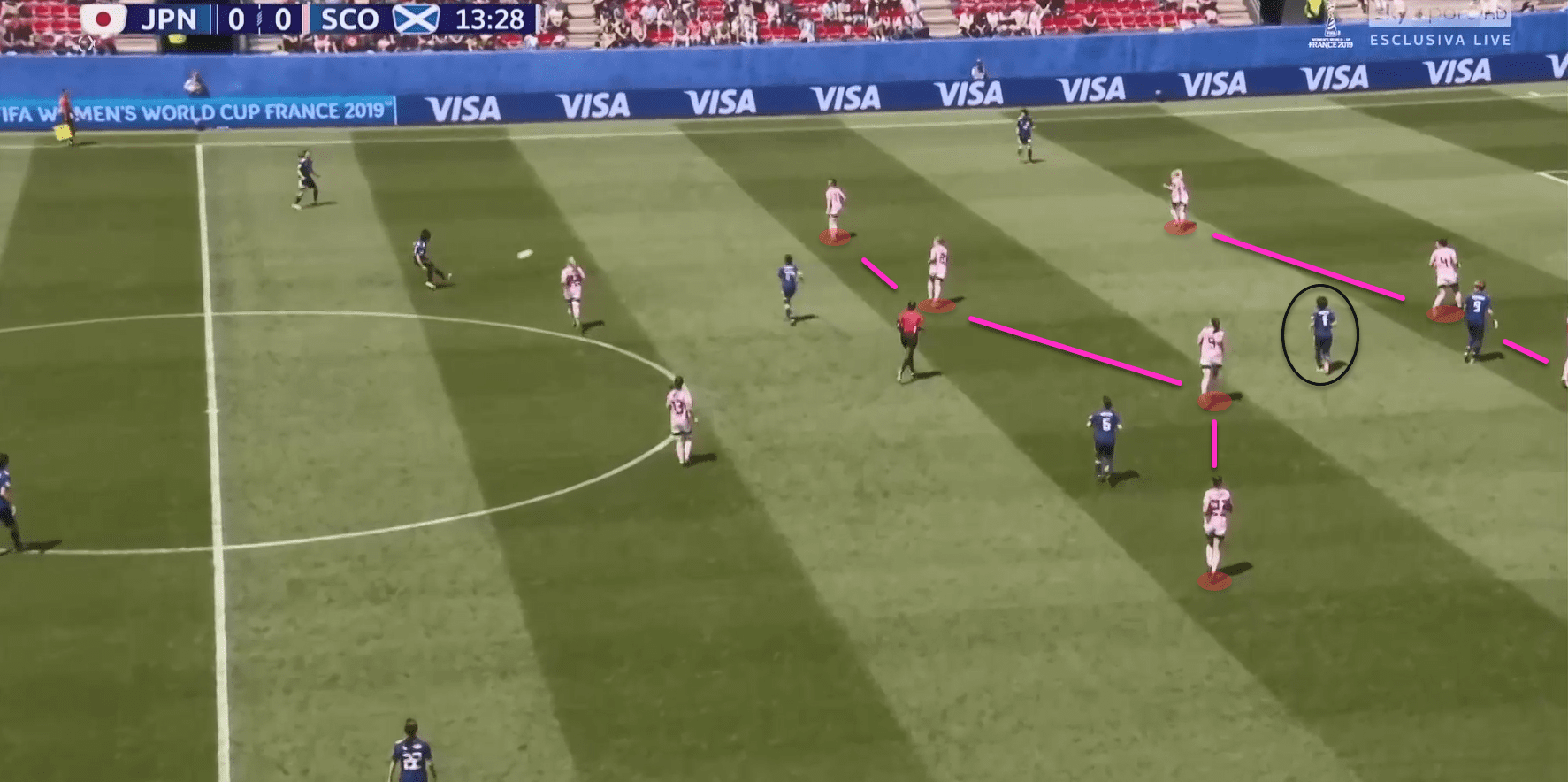
We saw glimpses of how Banini can trouble teams with her movement from this position in the friendly game against South Korea. In the first image below, Banini spots that a Korea defender has been dragged out of possession and begins her run in the space left vacant.
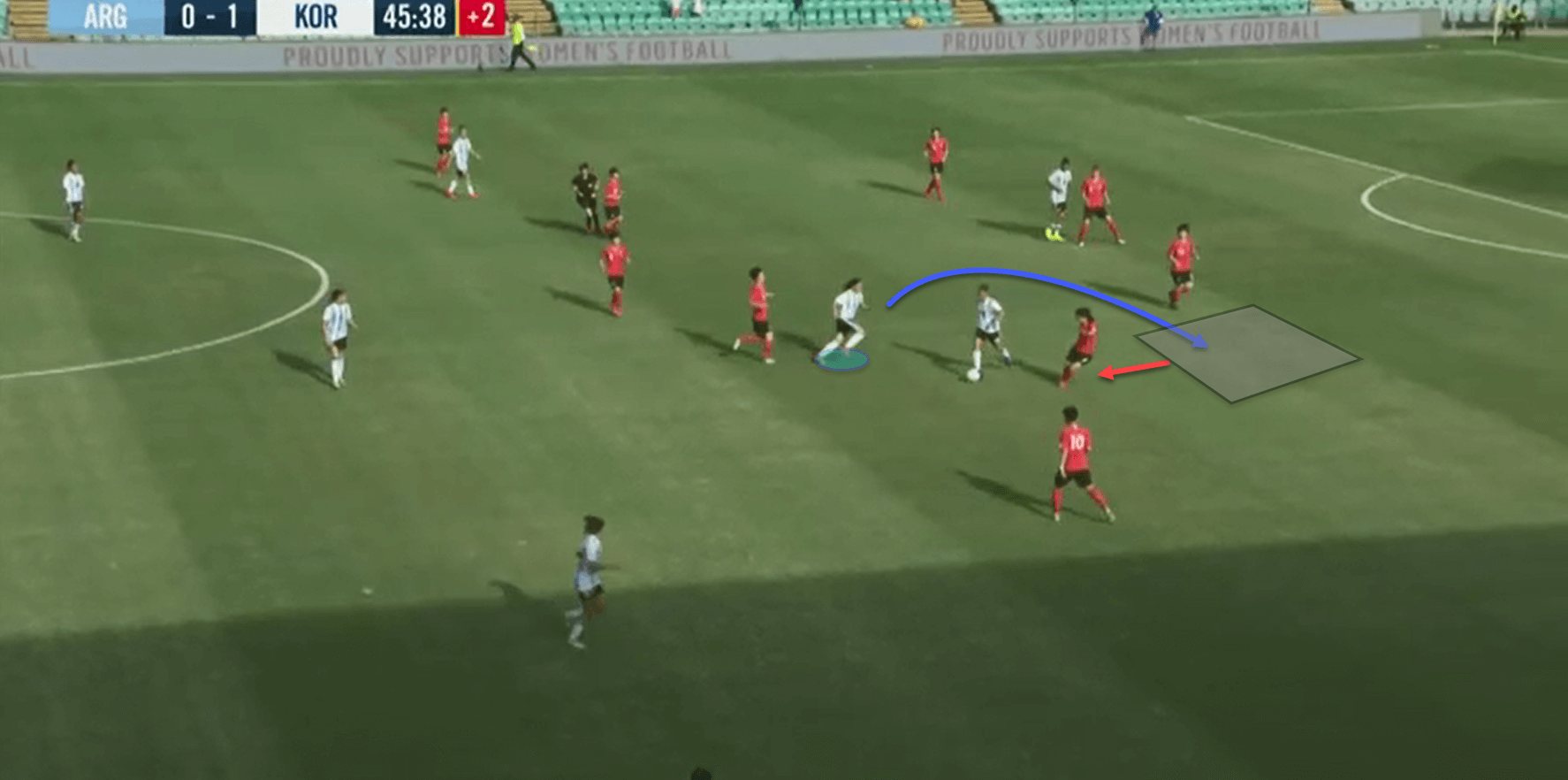
She is then able to receive the ball in a dangerous position as the midfielder marking her (circled in red below) is unable to track her run. This could be a challenge for Scotland who, like Korea, do not play with a holding midfielder responsible for defending this area of the pitch. It will be down to the defenders and midfielders to communicate among themselves to defend the space zonally.
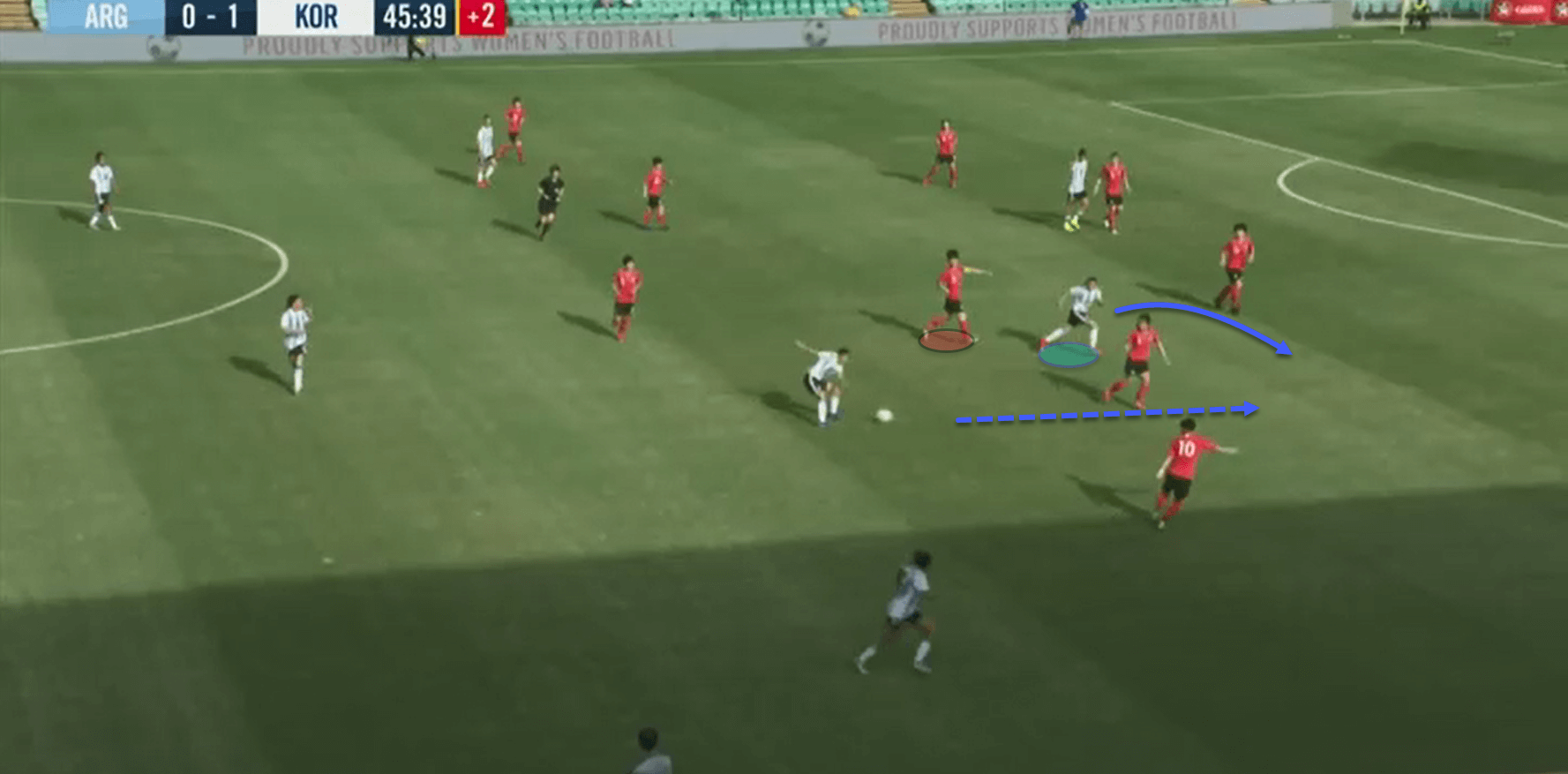
Scotland’s use of width
If Argentina are to be more adventurous going forward, they will have to be alert to Scotland’s danger from attacking transitions. One area that Scotland like to exploit in these situations is the flanks, as their two strikers each break off towards the channels to allow through balls to be played quickly into space as in the picture below.
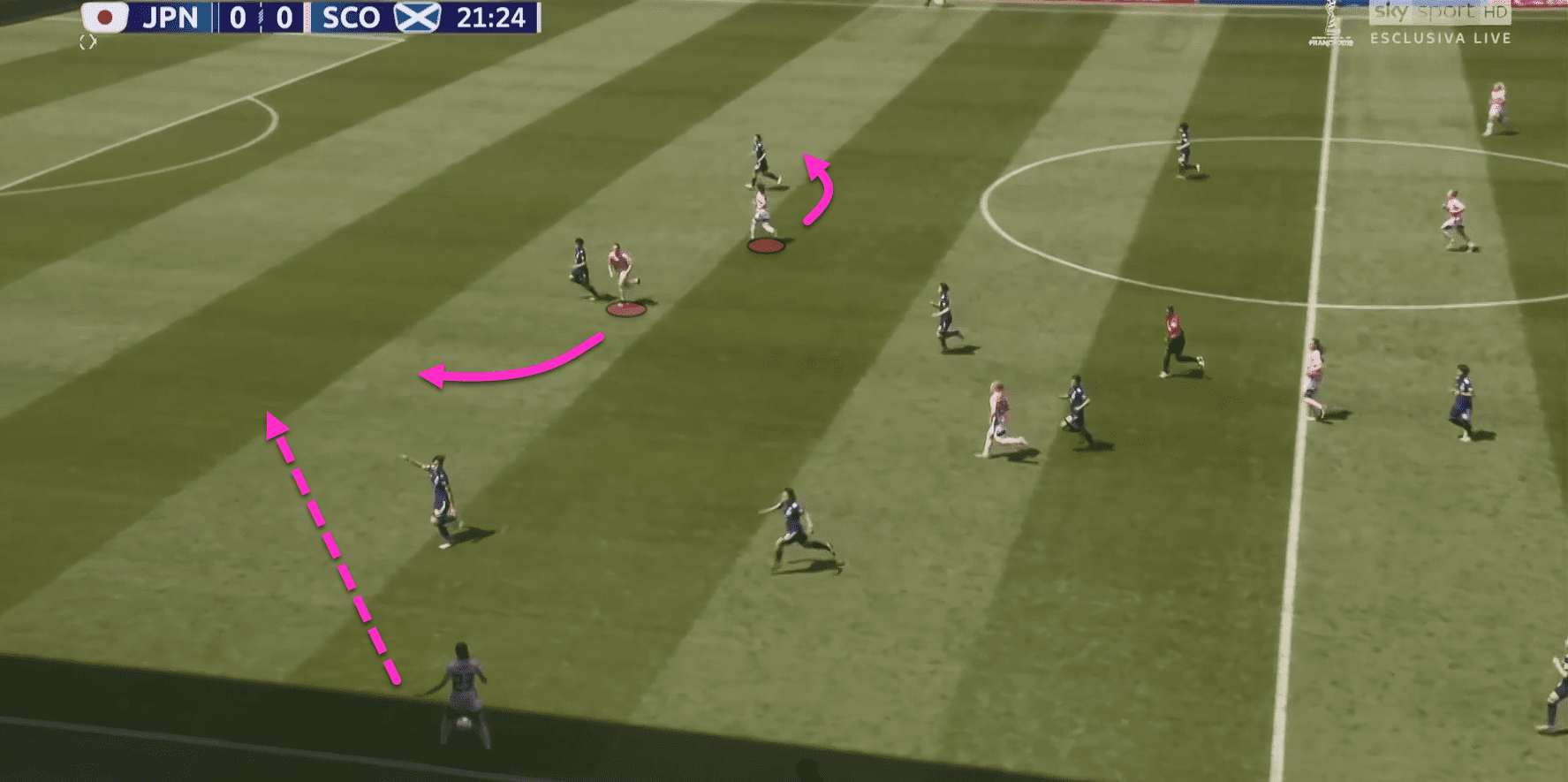
If either of Argentina’s full-backs are caught high up the pitch then the Albiceleste could be in trouble considering the Scotland front two’s habit of finding space down the flanks to stretch opposition defences.
In the images below we see an example of a counter-attack in which Scotland strikers Cuthbert and Ross find themselves in a 2 vs 3 scenario and instinctively look to invade the wide areas to get on the outside of the Japanese defence.
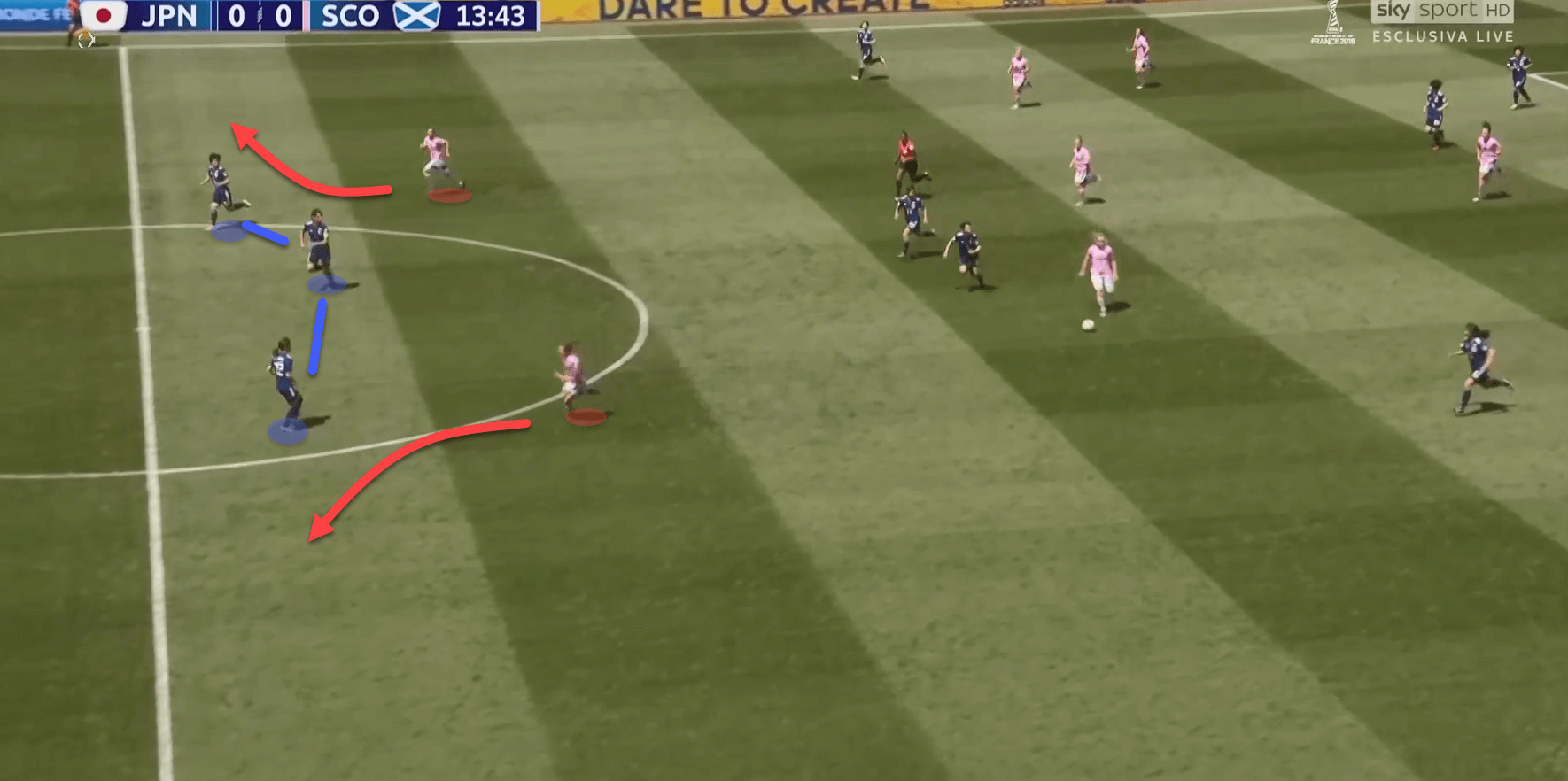
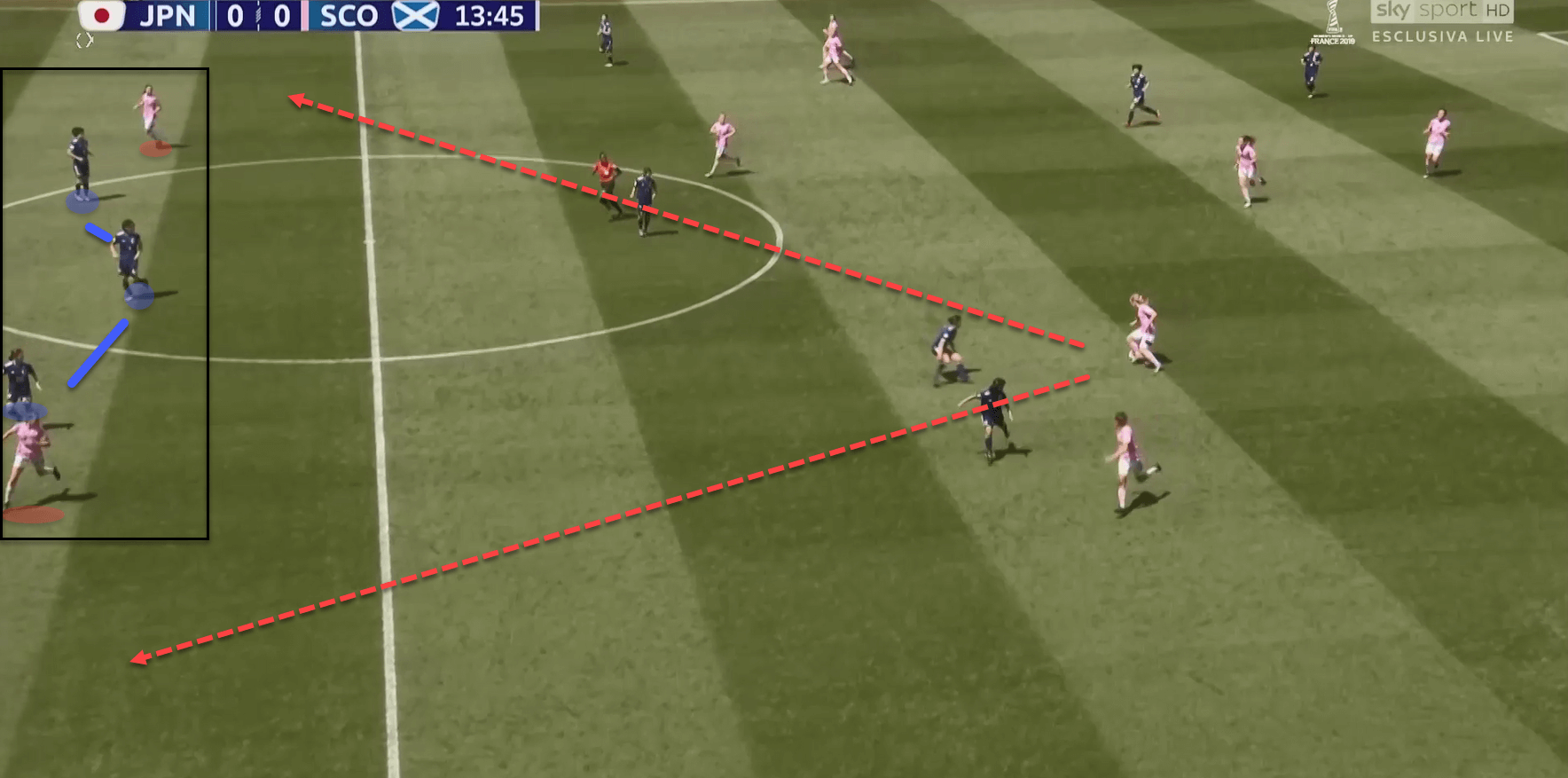
Conclusion
With both sides needing a win to stand any chance of making it through to the next stage, it’s bound to be an open encounter. Argentina, in particular, will need to adopt a much more offensive approach (they are yet to score in the competition) if they want to qualify and it will be interesting to see whether that leads their coach Borrello to go return to the 4-2-3-1 system used in the pre-tournament friendlies.
If Argentina do make this change then it should cause Scotland some problems defending the space between the lines. In any case, the main decision for Scotland manager Shelley Kerr will be whether to go back to the flat 4-4-2 used against Japan with the two strikers making runs into the channels or the 4-2-3-1 used against England, which could potentially mirror Argentina’s set-up.
Either way, considering what is at stake this could turn out to be a fascinating tactical battle with both sides having to take risks and adapt their game plan as the match develops.
If you are following the FIFA Women’s World Cup 2019 then you will find our FREE tactical preview magazine the perfect compliment to the tournament. You can download it HERE – each nation is previewed and we also profile their key player and young player to watch. Enjoy!





Comments